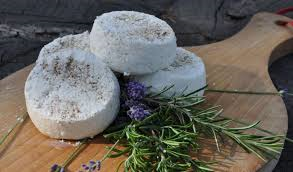Use the dregs of propolis of Apis mellifera in replacing the pesticide in horticulture
Keywords:
Organic Agriculture; Vegetables; Chemical contamination; PropolisAbstract
Products from horticulture are, generally consumed in natura, which increases the risk of human contamination by pesticides used to combat the frequent pests in this culture. The use of the dregs of propolis as substitute of agrochemicals comes to be an alternative to combat the pests of agriculture. In a small area of 50 m2 were planted the vegetables broccoli and arugula that received daily application of dregs of propolis at 30 %. The result of this treatment was the absence of pests common in horticulture, in addition to a greater development of leaves when compared whit witness. Was produced, therefore, healthy food, free of contamination by agricultural pesticides that are harmful to human health and the environment.
References
Aker, A.M., Angelo, R.Z., Lucena, G.O., Bravin, M. P., Prado, R.J. do, Miranda, I.A.A.M. de, Pereira, C.S., 2011. Use of ethanol extract of propolis (EEP) in control and drill miner coffee in Rondonia state, in: Simpósio de Pesquisa dos Cafés do Brasil, 7, Araxá, 2011. Proceedings... Araxá - MG
Albano, E.M.S., Zaina, T.C., Zanin, D.G., Gonçalves, R.A., 2007. Evaluation of the action of the extract from the dregs of propolis in control of sanity of beans. Fitopatologia Brasileira. 32, 147, 2007. Suplement.
Bezerra, K. K. S., Bezerra, A. M. F., Souza, L. C. F. S., Sousa, J. S., Silva, R. A., Boges, M. G. B., 2013. Antimicrobial activity of propolis on skin lesions. ACSA – Agropecuária Científica no Semi-Árido. 9(1), 17-23.
Marini, D., Mensch, R., Freiberger, M.B., Dartora, J., Franzener, G., Garcia, R.C., Stangarlin, J.R., 2012. Antifungal effect of propolis alcoholic extracts on grapevine pathogens. Arq. Inst. Biol. 79(2), 305-308.
Medeiros, C.A.B., Strassburger, A.S., Gomes, C.B., Wolff, L.F., 2008. Control of late blight (Phytophthora infestans) on potato cultivated in ecological systems. Horticultura Brás. 26(2).
Peres, F., Moreira, J. C., 2003. É veneno ou é remédio?: Agrotóxicos, saúde e ambiente. 20 ed. FIOCRUZ, Rio de Janeiro.
Pereira, C. S., Carvalho, S.J. de, Guimarães, R.J., Pozza, E. A., 2007. Ethanolic extract of propolis (EEP) applied in the substrat of plant of coffee, in: Simpósio de Pesquisa dos Cafés do Brasil (5: 2007: Águas de Lindóia, SP). Proceedings... Brasília, D.F.: Embrapa Café, 2007.
Prefeitura Municipal de Magé. Available in: http://www.mage.rj.gov.br. Access: 24 May 2013.
Santos, E.L., Silva, F.C.B., Pontes, E.C., Lira, R.C., Cavalcanti, M.C.A., 2013. Residue from processing the propolis extract red in commercial ration for fingerlings of Nile Tilapia (Oreochromis niloticus). Comunicata Scientiae. 4(2),179-185.
Zambolim.L. 2000. Integrated Management: diseases, pests and weeds. UFV, Viçosa.

Published
How to Cite
Issue
Section
Copyright (c) 2014 Denise de Mello Bobany, R.R. C.L. Martins, Juliana Costa Vieira

This work is licensed under a Creative Commons Attribution-NonCommercial-NoDerivatives 4.0 International License.



